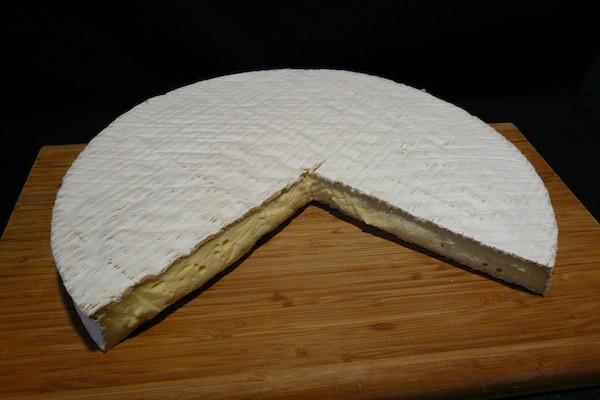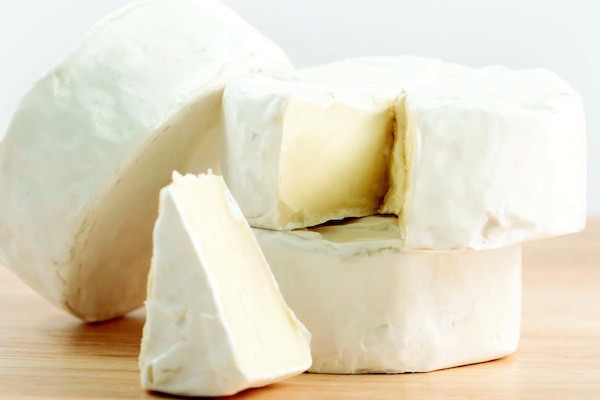
These soft earthy cheeses—like Camembert, Brie, St. Andre—are some of the most popular cheeses among both cheese aficionados and cheese newbies. Unfortunately, they also cause some of the greatest confusion (what’s the difference between Brie and Camembert again?). Terms like bloomy rind and soft-ripened can trip folks up, and if you’re intimidated by eating a rind that’s supposed to be fuzzy, you’re not alone. Don’t worry, this article will help you understand what your monger means next time he or she asks if you want a bloomy rind cheese for your cheese plate.
What’s in a Name?
Bloomy rind cheeses are called surface-ripened. Surface-ripened simply refers to all cheeses that are ripened from the outside (surface of the cheese) in. The term also gives handy clues to the rind and the creamy texture of the cheese. “Bloomy” refers to the soft, sometimes fuzzy rind resulting from the introduction of molds like Penicillium candidum. Bloomy rind cheeses are known for the white color and mushroomy flavor of the rind, which is edible (and delicious!).
Are We There Yet?
Because bloomy rind cheeses ripen from the outside in, they are often softer near the edges and slightly more firm in the center. This makes testing a bloomy rind cheese for ripeness a little tricky as easy give just underneath the surface is not a great indicator of the texture in the cheese’s center. Rather than poking it, take the wheel and gently flex it. A little give indicates ripeness; stiffness or firmness means it should age longer.
As they age, these cheeses sometimes display small brown spots, which are perfectly normal. However, if those spots become large or if the rind takes on a powdery rather than moist texture, the cheese has got to go. Other signs that the cheese might be past its prime are pink spots or an ammonia smell.
Brie vs. Camembert
While these cheeses have similar characteristics (white, mushroomy rind; creamy and pale interior), there are distinct differences between Brie and Camembert. Traditional Brie is much larger than Camembert (which is never more than 4½ inches across); as a result, Brie takes longer to age. Brie and Camembert are very geographically specific. They are what is called Appellation d’Origine Contrôlée (AOC), which means that according to French law, the names Brie and Camembert can only be used if the Brie is made in Île-de-France and Camembert in Normandy.
Cheesemonger Carlos Souffront says, “Even though the real raw-milk versions of both cheeses remain unavailable in the U.S. due to FDA regulations, the most true-to-form pasteurized Brie cheeses are available from Rouzaire in Tournan-en-Brie, while Isigny Sainte-Mère and the Ile de France brand in Normandy or Graindorge in Livarot make really good Camembert cheeses.”
What about the Brie and Camembert you find here in the U.S.? Well, technically it’s brie- or camembert-style cheese. You can also find cheeses in the bloomy rind style that have home totally local. For example, Cowgirl Creamery’s Mt. Tam (named for Northern California’s Mt. Tamalpais) is a silky triple-cream bloomy rind cheese with a mild, buttery taste. Ask your monger if you’re interested in exploring other local bloomy rind cheeses.

Brie de Meaux is recognizable due to it’s large circumference.
All By Myself
Bloomy rind cheeses are fantastic on their own, but every cheese likes to have a friend now and again.
- Champagne is a perfect pairing for cheeses that are super rich. The lively bubbles refresh your palate, making them perfect for balancing the creamy mouth feel of a St. Agur or Brillat-Savarin.
- Fruits and greens are excellent accompaniments to bloomy rind cheeses. The slight acidity of fruit or jam and the bright bitterness of fresh greens work well with the earthy, creamy flavor of the cheese.
- This Camembert, Speck, and Fresh Peach Crostini or this Spring Market Salad are both great ways to use a bloomy rind in a recipe.




